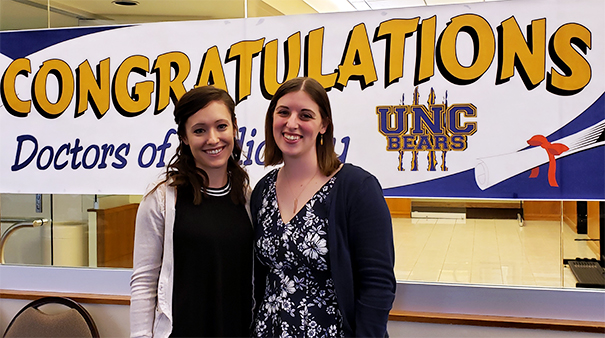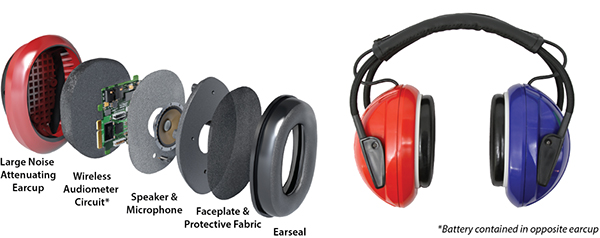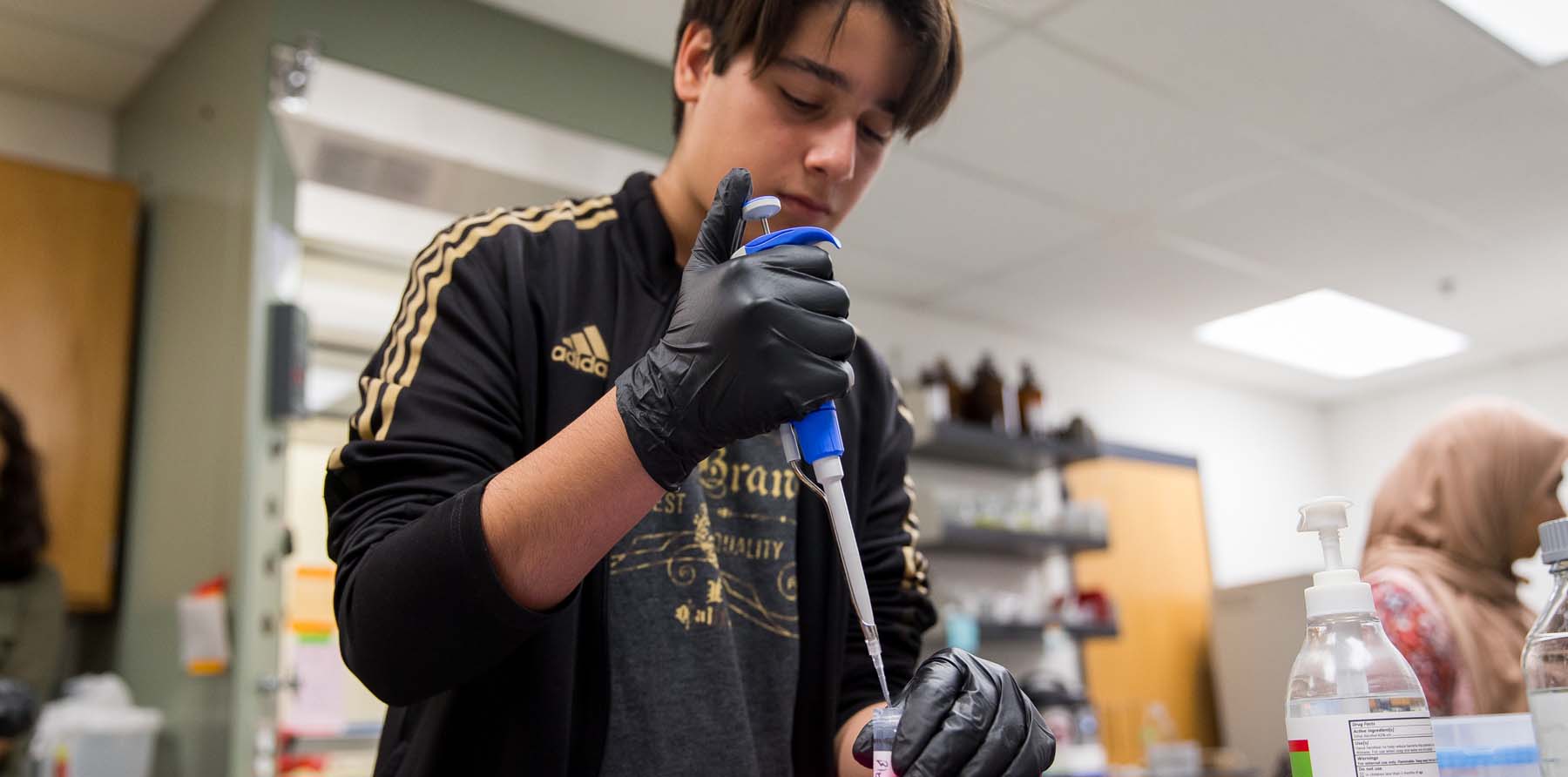
Studies by the University of Northern Colorado show that a new portable device can detect hearing loss without the need of a sound booth.
Above:Recent UNC graduates Ashley Stumpf, Au.D., and Jen Ruths, Au.D., used this device as part of their doctoral capstone research projects.
 The new technology was developed with grant funding from the National Institutes of
Health Small Business Innovative Research program and developed in partnership with
Creare Inc., an engineering research and development firm. Deanna Meinke, Ph.D., a
professor in the Department of Audiology and Speech-Language Sciences (image at right), was the principal investigator on the project and worked with Creare engineers
to design and test the wireless, automated hearing test system.
The new technology was developed with grant funding from the National Institutes of
Health Small Business Innovative Research program and developed in partnership with
Creare Inc., an engineering research and development firm. Deanna Meinke, Ph.D., a
professor in the Department of Audiology and Speech-Language Sciences (image at right), was the principal investigator on the project and worked with Creare engineers
to design and test the wireless, automated hearing test system.
Receiving a hearing test usually requires an individual to travel to a medical clinic, hospital or specialty practice with the use of specialized equipment in a sound-treated booth that’s operated by an audiologist.
The audiometer is built into the headset and automatically controlled by a tablet computer, which can be operated by untrained individuals. The entire test typically takes between 10 to 15 minutes to complete. The headset was also designed to reduce background noise levels in order to allow for testing outside of a clinical sound booth.

Above:The design of the wireless, automated hearing test system that is both portable and
easy-to-administer to patients.
This opens the door to more affordable and portable hearing testing as well as innovative research and experience with cutting-edge technology for students. Recent graduates and audiologists Ashley Stumpf, Au.D., and Jen Ruths, Au.D., used this device as part of their doctoral capstone research projects. They demonstrated its usefulness in different test environments within the northern Colorado community.
“Giving students the opportunity to implement and utilize cutting-edge technology will better prepare them for adopting future technological advances in the field of audiology and help them envision the future of hearing service delivery in unique settings,” Meinke said.
Identifying Hearing Loss in Refugee and Immigrant Communities
Ruths worked with 20 immigrant and refugee adults at the Immigrant and Refugee Center of Northern Colorado to administer the test to them with the help of the center’s interpreters using five different languages. If hearing loss was identified, Ruths referred individuals to local medical clinics and discussed additional resources the center might leverage to help those with hearing loss who are also taking classes at the center.
“I have an interest in humanitarian work, so that’s what drew me to an underserved population right here in our own community,” Ruths said. “I wanted to pick a capstone research project that not only contributed to the science and literature, but also contributed to people’s lives.”
After completing her research, she discovered that over 50% of those who took the hearing test at the center had hearing loss in at least one ear. This population has widespread issues with hearing loss compared to the general U.S. population. According to the National Institute on Deafness and Other Communication Disorders, “approximately 15% of American adults aged 18 and over report some trouble hearing.”
“It was a good start to be able to interact with the local immigrant/refugee community and with different interpreters because it gave me a good basis for working clinically with a diverse population, and that’s definitely where I see myself going in the future,” Ruths said.
After graduating, Ruths is going to work as an audiologist with pediatric patients at the Children’s Hospital of Philadelphia. Read her research abstract [HN2] (PDF).
Improving Access to Hearing Healthcare for Cancer Patients
Some chemotherapy drugs can cause hearing loss and other ear-related issues in cancer patients, and guidelines recommend hearing be monitored during treatment. Stumpf implemented the new wireless automated hearing test system at two outpatient cancer treatment centers located in Loveland and Greeley.
She evaluated the accuracy of hearing test outcomes in the presence of ambient noise levels at the centers and also compared the accuracy and efficiency of two different hearing test protocols. Stumpf recruited 21 cancer patients and eight nurses to participate in the study.
She found that the portable, automated hearing testing device can be implemented in outpatient cancer treatment centers by untrained nurses, and the newer test protocol provided equivalent results to the traditional protocol. These outcomes mean that hearing tests can be provided to patients in a faster and more convenient way with accuracy.
“Different chemotherapies can cause hearing loss, and this population doesn’t receive hearing healthcare as much as they should due to practical limitations, like scheduling appointments, traveling to visit an audiologist or even a lack of audiologists in the area,” Stumpf said. “The goal is to bring it to the patients and improve their access to hearing healthcare while they manage different diagnoses.”
Stumpf’s future plans include working at a private practice in the northeast corner of Colorado as well as continuing to work on this project as well as hearing-loss prevention.
Learn more about UNC's Audiology and Speech-Language Sciences Program.
—Written by Katie-Leigh Corder.
More Stories
-
Daniel Garza’s Journey from Platteville, Colorado, to Stellenbosch, South Africa
Este artículo no está en español.
-
Crafting a Home Field Experience
Este artículo no está en español.
-
Doctoral Candidate Tackles Social Issues Using Data Science
Este artículo no está en español.
-
Bridging the Gap Between High School and College: Frontiers of Science Institute
Este artículo no está en español.





